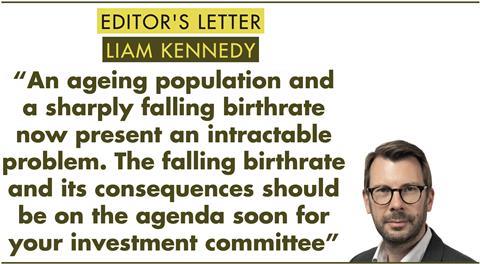If you live in a big city like London, and if you look hard enough, you are sure to find signs of a falling birthrate.
One key indicator of the capital’s 17% fall in births in the decade to 2021 is school rolls, which are declining markedly. Across Greater London, demand for first-year places in primary and secondary schools is set to fall by almost 8,000 in the four years to 2028.

Seven London boroughs are forecast to see a 10% drop over this period. Primary schools are closing in inner London boroughs – six primary schools closed in Hackney, in the eastern part of the capital, late last year.
Part of the explanation for this trend may be the increase in the cost of living in big cities like London, where rents have risen sharply in recent years and house prices remain prohibitively high for many aspirational young couples planning on having a family. Some couples will move to more affordable outlying areas but many are postponing having children or not having any at all.
The falling birthrate is part of a global phenomenon that is not confined to big cities. The magic number here is 2.1 – the number of children per woman needed to sustain population growth.
Research published in the Lancet medical journal in March this year found that by 2050, 97% of countries will have a declining population due to an insufficiently high birthrate.
Much of the focus has been on the other end of the population spectrum – the increases in healthy lives that most societies have enjoyed over many decades, which has led to a higher dependency ratio between the elderly and the working population in a host of countries.
There has been much debate about the recalibration needed in pension systems to shift the burden from pay-as-you go systems.
An ageing population and a sharply falling birthrate now present a more intractable problem – to politicians as well as investors.
A rational answer is, of course, higher immigration. But for a vast swathe of the electorate across the West it is the wrong answer. Populist politicians sometimes call for policies to boost the birthdate in a bid to stem immigration but pro-natal policies are not purely the province of the populist or far right. There is also ample evidence that they do not work.
In European countries, the social model already provides parental leave and other pro-childbearing incentives but they do not appear to have stabilised a declining birthrate.
Yet there is a powerful case for immigration, given the workforce pressures in many countries – not least to fill job vacancies in a host of lower-paid roles, most crucially in the field of social care. A healthy working population also supports pensions and the welfare system.
Italy has seen a marked decrease in the birthrate in recent decades. Now the right-wing populist government of Georgia Meloni has coupled hardline rhetoric on illegal immigration with a pragmatic approach that offers legal routes to fill job vacancies. Politicians will at some point need to admit that some higher level of immigration will be needed if the basic needs of society are to be met.
The reversal of the ‘demographic dividend’ – improved macroecomic conditions arising from a healthy labour market – has already been predicted, not least by Robert Gordon, professor of social sciences at Northwestern University well over a decade ago.
In their 2020 book The Great Demographic Reversal, Charles Goodhart and Manoj Pradhan presciently forecast that higher inflation and a higher real interest rate are the likely consequences of a smaller workforce and higher dependent elderly population.
Following this argument through, the end of ultra-low interest rates should lead to a shift away from debt corporate financing to equity, according to Goodhart and Pradhan. If not, the overhang could be sustained by artificially lower interest rates for a long period of time.
The profound long-term shift in demographics that we are starting to see more clearly has profound implications for long-term investors and the sources of asset class returns needed to fund pensions for millions of citizens.
As the authors of the Lancet article point out, high birthrates will be concentrated in the poorest parts of the world in future, including in sub-Saharan Africa. This could lead to a negative cycle of poverty, mass migration and regional or even global instability.
As well as dealing with issues on their own home turf, investors and politicians have a strong incentive to think about fostering economic stability and wellbeing in these societies. Investment, rather than dollar-to-mouth aid, would clearly be preferable.
The falling birthrate and its wide-ranging consequences should be on the agenda soon for your investment committee.
Liam Kennedy, Editor
+liam.kennedy@ipe.com




































1 Reader's comment